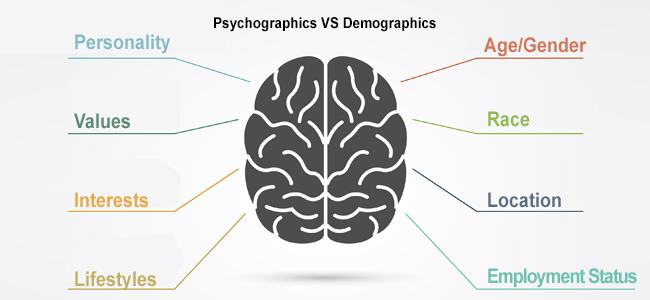Business psychology has existed as a separate field for well over 50 years — but how can your company’s marketing efforts build upon the lessons of psychology? Demographic information alone is no longer enough — psychographics is rapidly emerging as a key tool in many successful marketing programs. Research Optimus offers some new insights into targeted advertising based on both psychographics and demographics.
How Do Customers Think and Act?
Business owners and marketing managers should always be asking for a thorough analysis of how their customers make buying decisions — a better understanding of cognitive and social psychology can help you fill in many of the missing blanks. Cognitive psychology covers individual psychological processes such as motivation, emotions and reasoning; social psychology deals with the group impacts on individual behavior.
Is There Demographic Bias in Marketing Segmentation?
Consumer behavior is often expressed in terms of demographics such as age, gender and income. But if you know that 80 percent of your customers are women, do you really know why those customers bought your product? As marketing strategies become more sophisticated, it has become increasingly clear that businesses need new and refined approaches to market segmentation that include psychographic segmentation — for example, using a “persona” concept that reflects customer expectations and not simply census data categories like income and gender.
What Is Psychographics in Marketing?
Employing psychographics in your business marketing means that you are paying attention to consumer opinions and values — psychographic analysis is often called “lifestyle analysis.” Instead of demographic data collected by a census surveyor, the marketing use of psychographics refers to the kind of data a psychologist might use to “profile” someone. Psychographics is not generally thought of as “quantitative” because it is not feasible to use simple numbers to reflect what consumers want and why.
Psychographics vs Demographics
Business psychology experts now tell us that the modern-day consumer is more opinionated and complicated than revealed in traditional demographic uses of marketing. Demographic segmentation reveals “who” your buyer is while psychographic segmentation reveals “why” they buy. Demographics include the cold, dry facts like marital status or age; psychographics includes subjective factors such as opinions, values, attitudes and habits. Psychographics shows your business how potential buyers interact with the world — for example, are they extroverts or introverts?
How to Gather Psychographic Data
Once you agree that psychographics is an important piece of your marketing strategy, how do you obtain psychographic data? Of course, one way is to act like a business psychologist and perform personality surveys. However effective this would be, there are better ways of doing it in today’s digital world. One of the smartest ways to join the psychographics revolution is likely to be a collaborative effort — find “digital anthropology” consult experts to help guide you in your 21st century marketing plan built upon psychographics instead of merely demographics. As cultural observers might say, “Demographics is so 20th century!”
The End of Demographics?
The use of demographics is not yet extinct — a better way to think of it is that demographic marketing needs to be blended into a modern recipe that includes a healthy dose of psychographics. Instead of dealing solely with a demographic marketing expert, you need to work with experts who have constantly added to their business services repertoire during the past decade.
Social media analytics will help you with psychographics and business analytics effectively provides the demographic dose that companies still need in their marketing recipe — research companies have been doing both for a long time.
Your Next Step?
It is not unusual for business executives, managers and employees to be somewhat confused and intimidated by discussions that include terminology like demographics vs psychographics and psychographic segmentation. In such situations, don’t hesitate to ask for help and advice from research and data management specialists like Research Optimus. We would be honored to help your company take the next big step along your business path that leads to the next level.
Please join us in the conversation by adding your comments and sharing this article with your social media circles.
– Research Optimus





